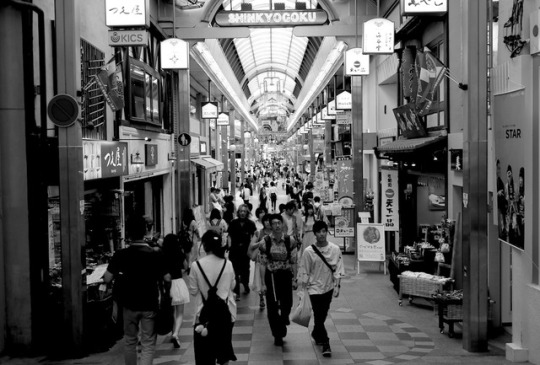#shinkyogoku kyoto
Text
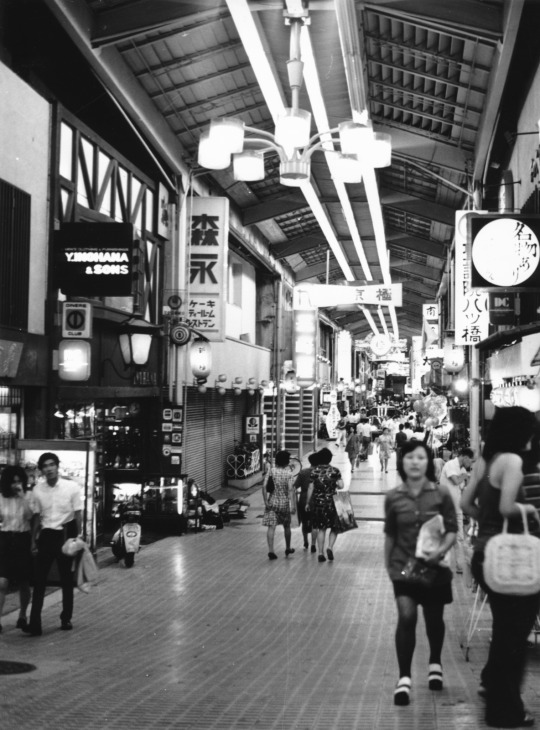
Shinkyogoku shopping street, Kyoto, 1978. From the Budapest Municipal Photography Company archive.
33 notes
·
View notes
Note
☆ Share 3 fun facts about you, then pass this to three of your mutuals! ☆
:D Thank you alexis513, @happyocelot, and @lavdiiaa for the tag/ask!! 💖
I was in Japan last week! We went to Universal Studios Japan in Osaka for a day. Then in Kyoto, we went to Arashiyama, Kiyomizu-dera, Teramachi & Shinkyogoku, and Fushimi Inari Taisha. Last we went to Shirahama, Kimiidera, Doujou-ji, and Wakayama Castle in Wakayama! We were so busy.
I just finished reading a short book while on the trip: The Sound of Waves by Yukio Mishima. It was the most wonderful little love story about two young teens who fall in love but the girl's father objects to their relationship due to an awful rumor. With the counsel and support of their role models, the two of them hold out for the day they can be together again.
I took these pics of early-blooming sakura at Doujou-ji. It was raining all day, but Japan is super lovely in the rain. These are probably the best pictures I've ever taken of sakura.



10 notes
·
View notes
Photo

I didn't get the best picture of the sign, so there may be errors in the transcribed Korean text.
新京極
北は三条通から南は四条通に至る約五百メートルのこの通りを新京極通といい、通り各平安京の最も東に位置した東京極大路(現在の寺町通)の東側に新しく造られた通りであることに由来する。
天正年間(一五七三〜一五九ニ)、豊臣秀吉が市中の多くのを寺院を寺町通に集めたことに伴い、その境内が縁日の舞台として利用され、周辺は見世物や催し物を中心に発展するようになった。
明治五年(一八七ニ)、このことに注目した京都府参事槇村正直は東京還都で衰えていた市民の士気を盛り上げるべく、寺院の境内を整理して、そこに新たな通りを造った。新京極通の誕生である。
明治十年(一八七七)頃には芝居座、浄瑠璃、寄席などの興行場や飲食店などの多くの店舗が建ち並び、明治三十年代には東京の浅草、大阪の千日前とともに、日本の三大盛り場として知られるようになった。
現在も、修学旅行性をはじめとする多くの観光客や買物客でにぎわう、京都を代表する繁華街である。
上方落語の始祖・安楽庵策伝が住職を務めた誓願寺、和泉式部の寺として知られる誠心院や、西光寺、蛸薬師堂妙心寺、安養寺、善長寺、錦天満宮、染殿院という由緒ある七つの寺院と一つの神社が通りの歴史を今に伝えている。
京都市
Shinkyogoku
Shinkyogoku-dori street, which is approximately 500 meters long, runs between Sanjo-dori Street in the north and Shijo-dori Street in the south. The name Shinkyogoku (literally means the new edge of the capital) was given because it was constructed on the east side of Higashi Kyogoku Oji (literally means means the boulevard on the eastern edge of the capital), which is presently called Teramachi-dori.
The Japanese warrior commander Toyotomi Hideyoshi relocated a number of temples from other places in town to Teramachi-dori Street. The precincts of the temples were used as stages of fairs then, and the vicinity of Termachi-dori Street developed as an area focusing on shows and events. In 1872, Kyoto Vice-Governor Masanao Makimura gave an eye to the area. He rearranged the precincts of the temples and built the new street in order to enliven the morale of the residents of Kyoto that had declined as a result of the relocation of the capital to Kyoto. This is how Shinkyogoku-dori Street was born.
Around 1877, numbers of facilities, such as playhouses, Joruri theatres (traditional Japanese puppet theatres), variety halls, and restaurants lined the streets. Later, this area along with Asakusa in Tokyo and Sennichimae in Osaka came to be known as the three greatest entertainment quarters in Japan.
Still now, Shinkyogoku-dori Street is a busy street representing Kyoto and crowded with a large number of tourists and shoppers including students on school excursions.
There are seven historic temples and a shrine that pass down the history of the area.
Kyoto City
(Chinese)
신쿄고쿠
북으로는 산조도리(三条通)에서부터 남으로는 시조도리(四条通)에까지 이르는 약 500m의 이 길은 신쿄고쿠도리(新京極通)러고 하며, 이 도로의 이름은 헤이안큐(平安京)의 가장 동쪽에 위치한 하가시쿄고쿠오지(東京極大路・현재의 데라마치도리(寺町通))의 동쪽으로 새로만들어진 길이라는 뚯에시 유래하였다.
16세기 후반, 도요토미 히데요시(豊臣秀吉)가 시내의 많은 사원들을 대라마치도리로 집결시키면서, 경내에서 재를 올릴 때마다 그 주변에서 공연이나 행사 등이 자주열리며 발전하게 되었다.
1872년, 이 점에 주목한 교토부 참사 마키무라 마사나오(槇村正直)는 토쿄 천도로 침체되어 있던 시민들의 시기를 끌어옵리기 위해 사원의 경내를 정리하여 이곳에 새러운 길을 만글었는데, 이것이 바로 신쿄고쿠더리 탄생의 유래이다. 1877년, 무렵에는 연극극장, 조루리(浄瑠璃: 음악에 맞추어 낭창하는 옛날이야기), 만담 등의 공연장과 음식점 등 많은 점포들이 들어서면서 도쿄의 아사쿠사(浅草), 오사카의 센니치마에(千日前)와 함게 일본의 삼대 번화가로 널리 알려지게 되었다.
요즘도 수학여행 학생들을 비롯해 많은 관광객들과 셔핑객들로 붐비는, 교토를 대표하는 번화가이다.
길가에는 유서 깊은 7개의 사원과 신사 하나가 자리해 있으며, 그 역사를 오늘에 전하고 있다.
寄贈 新京極商店街
Japanese vocab
新京極 (しんきょうごく) Shinkyogoku
三条通 (さんじょうどおり) Sanjoudoori
四条通 (しじょうどおり) Shijō Street/Shijoudoori
平安京 (へいあんきょ) Heian-kyo; ancient Kyoto
東京極大路 (ひがしきょうごくおおじ) Higashi Kyogoku Oji
寺町通 (てらまちどおり) Teramachi Street
造る 作る
天正 (てんしょう) Tenshō era [1573-1592]
豊臣秀吉 (とよとみひでよし) Toyotomi Hideyoshi
寺院 (じいん) Buddhist temple
伴う (ともなう)to be accompanied by, to take with
境内 (けいだい) grounds (esp. of shrines and temples)
縁日 (えんにち) temple festival; day related to a specific deity
見世物 (みせもの) show, exhibition, spectacle
催し物 (もよおしもの) (program of) entertainments, special events, attractions
参事 (さんじ) secretary, councilor
槇村正直 (まきむら・まさなお) Makimura Masanao
還都 (かんと) return of government (esp. Kyoto)
衰える (おとろえる) to become weak, decline, decay
士気 (しき) morale (of troops, team, etc)
誕生 (たんじょう) creation, formation
芝居座 (しばいざ) playhouse, theatre [more common: 芝居小屋 (しばいごや)]
浄瑠璃 (じょうるり) jōruri, a type of dramatic recitation accompanied by a shamisen
寄席 (よせ) entertainment hall (for rakugo, manzai, magic, music, etc.)
興行 (こうぎょう) show, performance, act
店舗 (てんぽ) shop, store
建ち並ぶ (たちならぶ) to stand in a row (i.e. shops on a street)
浅草 (あさくさ) Asakusa
千日前 (せんにちまえ) Sennichimae
盛り場 (さかりば) busy street, amusement quarters
修学旅行性 (しゅうがくりょこうせい) student on a field trip
繁華街 (はんかがい) business district, shopping district, downtown
上方 (かみがた) Kyoto-Osaka region
始祖 (しそ) founder, pioneer
安楽庵策伝 (あんらくあん・さくでん) Anrakuan Sakuden
住職 (じゅうしょく) chief priest (of a Buddhist temple)
務める (つとめる) to serve (as), fill (the position of)
誓願寺 (せいがんじ) Seigan-ji
和泉式部 (いずみ・しきぶ) Izumi Shikibu
誠心院 (せいしんいん) Seishin-in
西光寺 (さいこうじ)Saikou-ji
蛸薬師堂 (たこやくしどう) Takoyakushido
妙心寺 (みょうしんじ) Myōshin-ji
安養寺 (あんようじ) Anyo-ji
錦天満宮 (にしきてんまんぐう) Nishiki-Tenmangū
染殿院 (そめどのいん) Somedonoin
由緒 (ゆいしょ) history, pedigree, lineage
寄贈 (きぞう) donation, presentation, gift
Korean vocab
북 north
가장 most, best
동쪽 east
위치하다 to be situated, located
형재의 current, present
유래하다 to originate
후반 second half
사원 temple
집결시키다 to assemble
경내 precincts, grounds
주변 surroundings
행사 event, function, ceremony
발전하다 to develop
주목하다 to watch, pay attention
참사 disaster, tragedy
천도 transfer of the capital, moving the seat of government
침체 recession, depression, become stagnant
시민 citizen
정리하다 to organize, put together
탄생 birth, be born
무렵 toward (i.e. toward the end of [time period])
연국 극장 drama theatre
만담 comic talk, (informal) gag
공연장 theater, venue, auditorium
점포 shop, store
들어서다 to go up, be built
번화가 main road
알려지가 to be well known
수학여행 school trip
비롯해 including?
관광객 tourist
쇼핑객 shopper, customer
붐비다 to be crowded, bustling
대표하다 to represent
길가 roadside, wayside
유서(가) 깊다 to have a long history
자리하다 to be located, be situated in
역사 history
#日本語#日本歴史#Japanese language#Japanese vocabulary#Japanese langblr#寺町通#Teramachi#Kyoto#京都#Japanese history#한국어#일본 역사#Korean language#Korean vocabulary
5 notes
·
View notes
Text
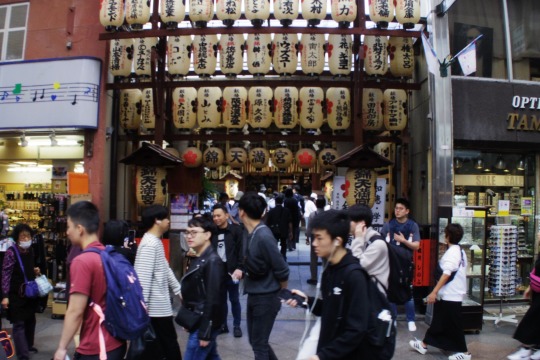
Wandering around Kyoto, stumbled upon the Nishiki Tenmangu Shrine in Shinkyogoku
0 notes
Photo
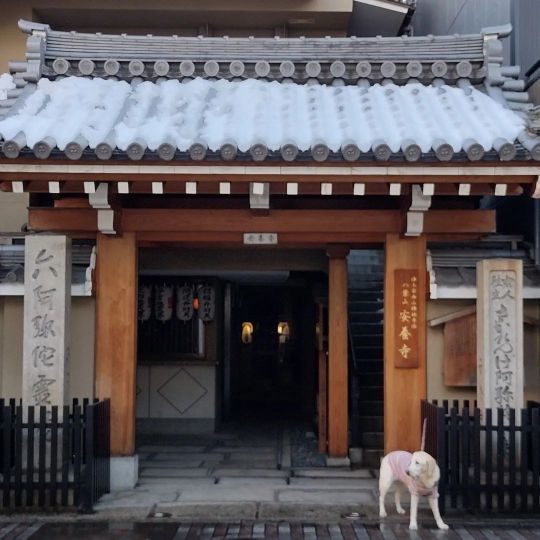
Next stop on our first trip to Japan was Kyoto. We took the Shinkansen 🚅 to Kyoto from Shizuoka, the kinda failed stop...lol We stayed at Hotel Okura in Kyoto @hotelokurakyoto . Which was an extremely nice hotel and great location in general. Definitely worth the stay if you're going to Kyoto. The hotel happened to be right across the street from the Kyoto Shinkyogoku Shopping Street @shinkShinkyogok. So we started checking it out and found many shrines and temples that had been moved to that location. Especially the Nishiki-Tenmangu Shrine. Where I bought some of the charms shown in the photos. For family members and friends when I got home. This was only the first stop and first day of our time there. And I have many photos of the Imperial Palace and temples and shrines we visited throughout Kyoto. I will start posting those soonish. #kinda_geeky #kindageeky #japan #birthdayvacation #hotelokurakyoto #shinkyogokushoppingstreet #nishikitenmangushrine #kyoto (at Shinkyogoku Shopping Street Union) https://www.instagram.com/p/CpO90bNLkal/?igshid=NGJjMDIxMWI=
#kinda_geeky#kindageeky#japan#birthdayvacation#hotelokurakyoto#shinkyogokushoppingstreet#nishikitenmangushrine#kyoto
0 notes
Photo



Shinkyogoku Shopping Arcade Area, Kyoto
📷 @ig_haruchan
70 notes
·
View notes
Photo
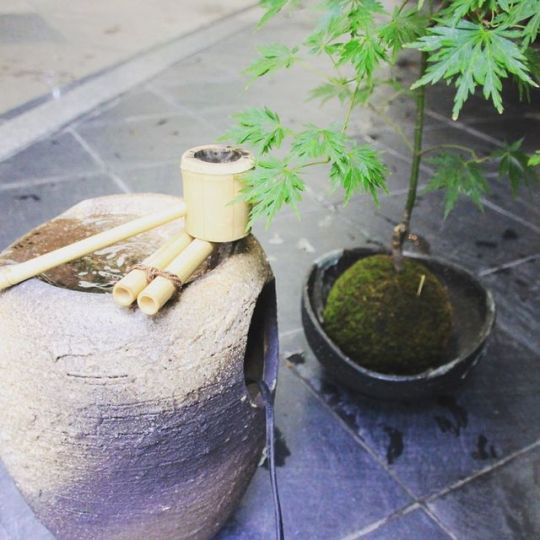
KYOTO🍵 新京極や京極通りをふらふら。先斗町で牛カツランチ。 帰る前に家族写真。おばあちゃんのリクエストでわたしとのツーショットも📸 アルバムに入れるんだと☺️ #新京極通り #京極通り #先斗町 #涼 #shinkyogoku #kyogoku #kyoto https://www.instagram.com/p/B1a7Cw7hQ5y/?igshid=ti79jzc0vkrs
0 notes
Photo

ここのシェーキーズ は古くからあるよ Shakey's pizza shinkyogoku kyoto since 1973 #シェーキーズ #ピザ #ピッツァ #ピッツェリア #カフェテリア #Shakey's #pizza #pizzateria #weservefun #shakehands #dixielandjazz #shinkyogoku #since1973 #kyoto #japan (シェーキーズ 新京極店) https://www.instagram.com/p/Byo6498gdnp/?igshid=1cx38c31xxnbj
#シェーキーズ#ピザ#ピッツァ#ピッツェリア#カフェテリア#shakey#pizza#pizzateria#weservefun#shakehands#dixielandjazz#shinkyogoku#since1973#kyoto#japan
0 notes
Text

Shinkyogoku shopping street, Kyoto, 1978. From the Budapest Municipal Photography Company archive.
24 notes
·
View notes
Video
Bengal Cats, I think there were almost 8 of them 🐯 #kyoto #japan #shinkyogoku #jucistravelogue #kyotobengalcatforest #bengalcat #日本 #京都
1 note
·
View note
Text

A Fine Round Friend, spotted on a restaurant sign on Shinkyogoku street, Kyoto.
9 notes
·
View notes
Video
youtube
💈 Traditional Japanese Wet Shave by Cool 75 Year Old Kyoto Barber | 下前理容...
We filmed a traditional Japanese wet shave video in Kyoto with Mr. Shimomae Kunihiro who is 75 years old. 下前理容室 Shitamae Barber Shop is tucked away on the second floor of a building not too far away from the very popular Shinkyogoku Shopping Street.
What makes the experience fun is that he is really friendly and loves all the people from around the world who visit his shop, and he has everyone sign a map and guest book 💈❤️ Visitors from the Netherlands, France, Nepal, and Canada have stopped by his shop.
1 note
·
View note
Video
youtube
(via https://www.youtube.com/watch?v=EUMAcaKjXIY)
Today me & my friends finally went to Nishiki Market! And let me tell you there were as many people and as there were food for sale. There was so much food I could hardly believe it, I wish I could just bring an unlimited amount of money and just eat all the skewered foods! While I was there I tried mame mochi, salmon sashimi and tako! Later I had a strawberry crepe then some ramen for dinner (not shown because my phone died and I didn’t wanna get up to charger it while eating).
I was pretty surprised today too because at the H&M store nearby the market they had clothes that fit me and were still like Japanese popular style/aesthetic so I bought a couple things, plus a scarf because it’s freezing every day!
I’m not sure what I’m going to do tomorrow, I was supposed to go kimono shopping so that I’d have something to wear to the upcoming matsuris but I’m not sure if just renting a kimono would be better?
#video#japan#japanese#kyoto#study abroad#studying abroad#nishiki#nishiki market#Shinkyogoku#h&m#shopping#disney#food#japanese food#anime#manga#robots
1 note
·
View note
Text
June 7 - International Manga Museum
We had a light day today, with only one, relatively brief, activity. That activity was the Kyoto International Manga Museum, an archive dedicated to Japan’s infamous printed media format. I’m not the biggest manga fan, but I still found the museum fascinating. It was interesting seeing the progression of the art form from its humble beginnings in the postwar era up to the present. One trend I observed was not only the increasing complexity and depth of the art styles but also the proliferation of various types of content. I also thought it was neat that they allowed people to take books off the shelves and read them in the museum. After spending some time browsing the exhibit, we watched an antiquated picture show performed by an enthusiastic museum employee. He was funny and adept at interacting with the crowd, especially the children in the audience. I really enjoyed the show.
After the museum, I checked out a vegetarian café in Shinkyogoku. The restaurant had a hip and modern aesthetic, and it was nice being able to actually have multiple options on a menu. I ordered a lunch platter with fresh seasonal vegetables, miso soup, and tofu curd bites. It was a little pricey, but super delicious. After lunch, I went for a walk along the Kamo River. It had been raining all morning, so the sky was a moody gray, and the mountains were shrouded with mist in the distance. I saw a man feeding birds, children hopping on the stone bridges across the river, and even a pair of deer. Before I knew it, I had been walking for a few hours, and I was nearly at the base of the mountains that had appeared so remote when I started. I explored the area a bit and came upon a few small shrines tucked away in the crevices of residential areas in the foothills. In comparison to the more famous shrines we’ve visited, these were completely empty. There was a certain sense of spirituality present that I haven’t felt at the busier ones. I got lost on my way back (an inevitable outcome every time I venture out on my own) because of some issues with my GPS, but fortunately, I was helped by a kind woman who walked me to the right bus stop. The kindness of the people here continues to amaze me.
Academic Reflection
Manga is read and cherished around the world, yet its reputation in its home country is not exactly one of high standing. Although it is read by many in Japan, in most academic circles manga is seen as an inferior art form, one that is immaturely unequipped to deal with complex topics. I disagree with this assertion, as I think that manga is as valid a medium as any and exhibits a high degree of artistic potential. The International Manga Museum proves this, with its staggeringly wide variety of manga and deep analysis of the art form.
Another controversy surrounding manga is its credibility as a truly “Japanese” art form. There are some who argue that its origins lie entirely within Japanese tradition, such as the iconic picture scrolls from the middle ages. However, I think it is impossible to convincingly dispute the immense impact western culture had on the development of manga during the postwar period, particularly American comics. Manga in its current form would likely not exist without such outside influence.
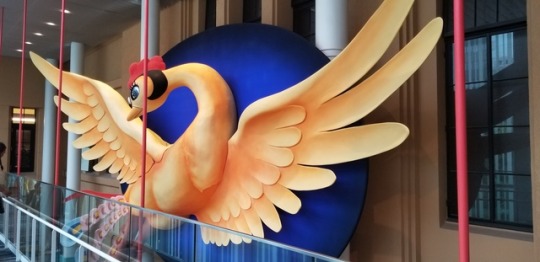

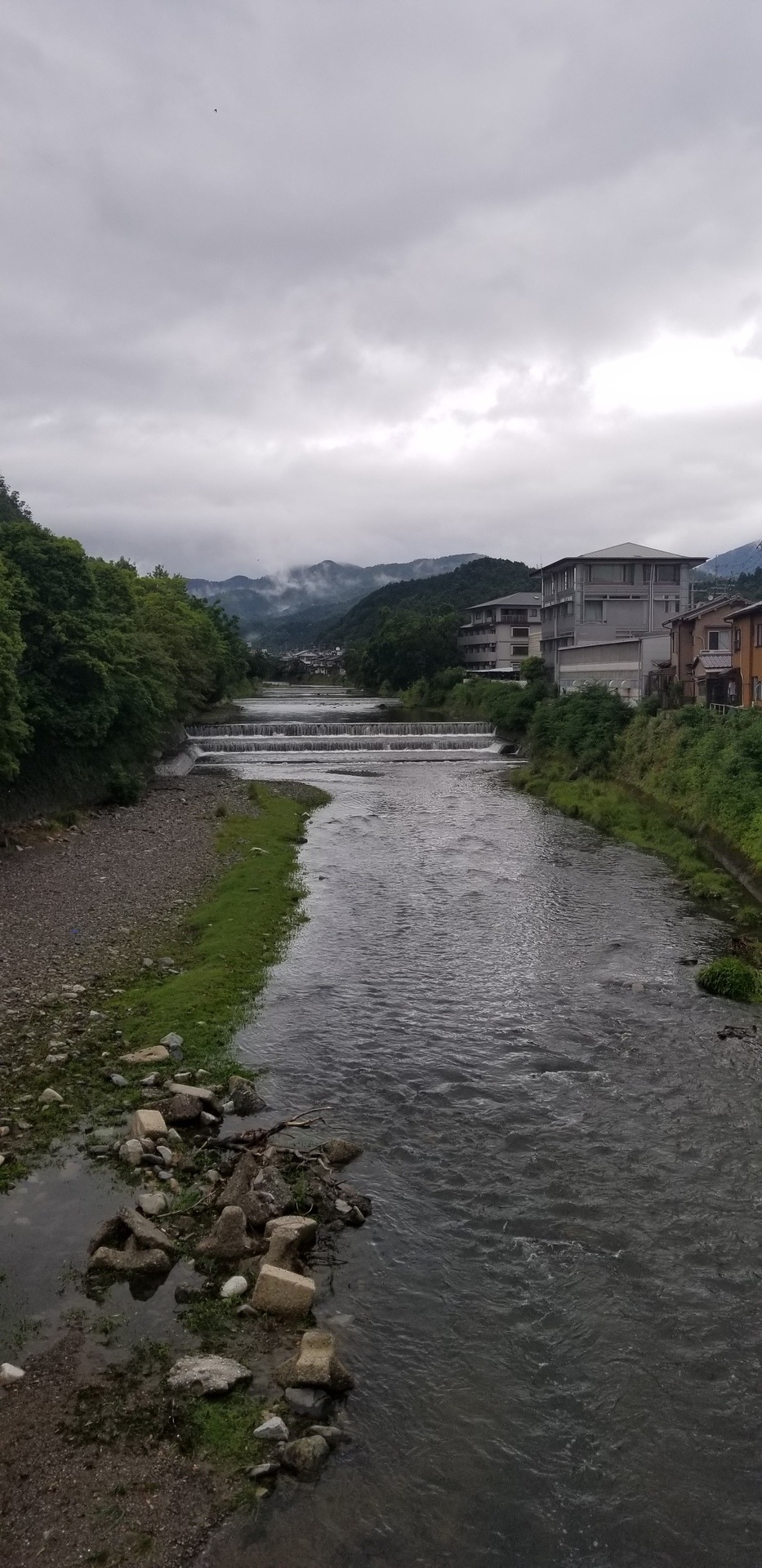
1 note
·
View note


